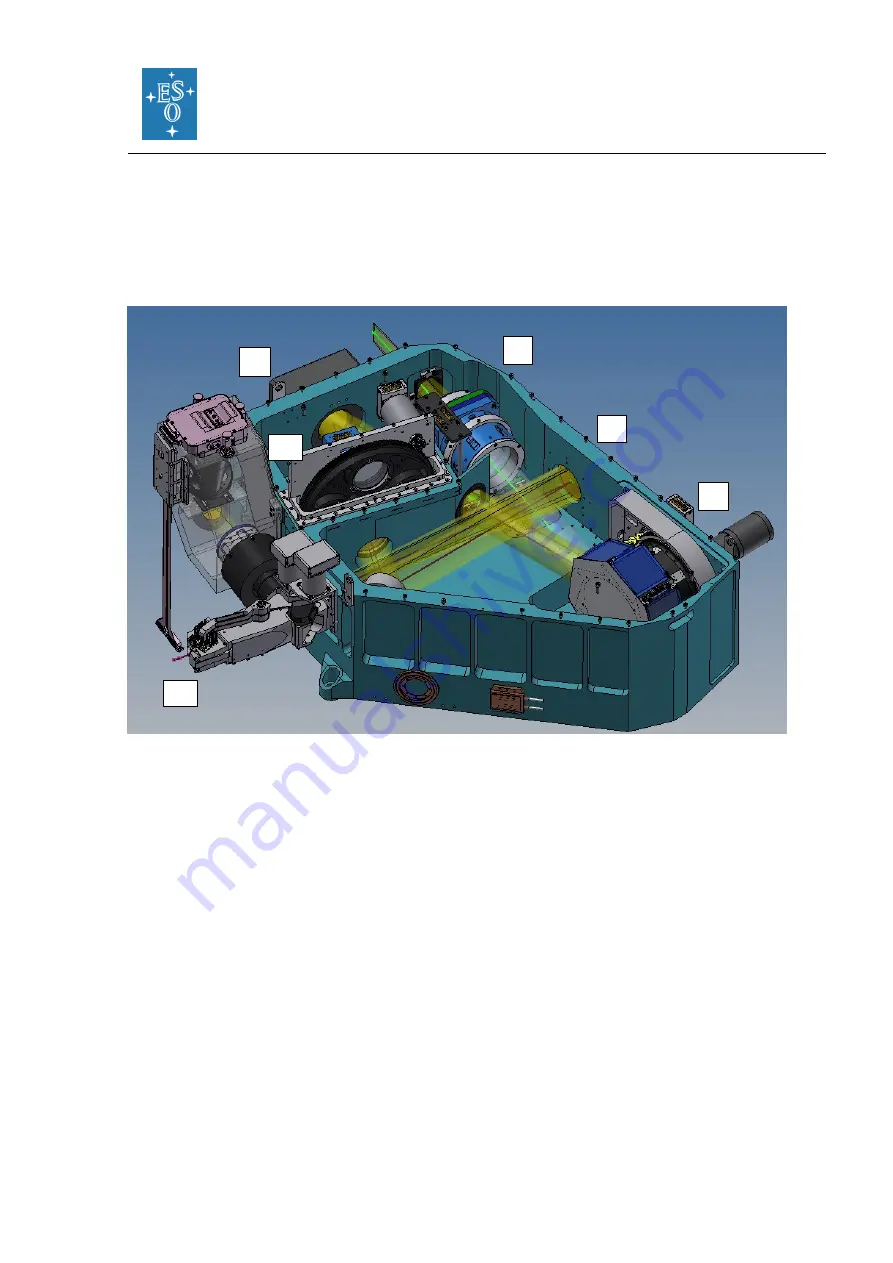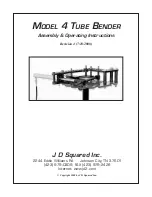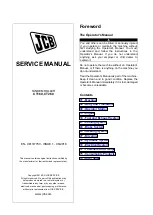
User Manual
Doc. Number: ESO-323064
Doc. Version: 2
Released on:
Page:
13 of 82
Document Classification: Public
3.1.1 The new Cross-Dispersion unit
The fore-optics of the upgraded CRIRES is shown in Figure 4. It consists of an off-axis
parabola, which creates a collimated beam with a diameter of 50 mm, being followed by two
flat mirrors with distances and angles adjusted to match the new fore-optics with the already
existing three-mirror anastigmatic (TMA) relay optics and the echelle grating which
remained from the original CRIRES instrument.
Figure 4:
Top view of the new CRIRES fore-optics assembly
Figure 4 shows that the beam from the f/15 focus at the new entrance slit (A) is collimated
by a parabolic mirror (B) and arrives at the cross-disperser wheel (E) via two flat mirrors
and a long pass filter wheel (C) to block the 2
nd
and higher orders of the cross-disperser
gratings. The jitter mirror (D) has two piezo actuators that allow the echellogram to be
translated at sub-pixel accuracy on the detectors. The order-sorting filter can be accordingly
selected from one of three filters (YJ, KH, LM or an open position) to the chosen cross
disperser grating. The cross-disperser wheel contains six reflection gratings, one for each
of the wavelength bands Y, J, K, H, L and M. The Metrology system ensures accurate
repeatability of the cross-disperser wheel.
A
C
B
D
E
F














































